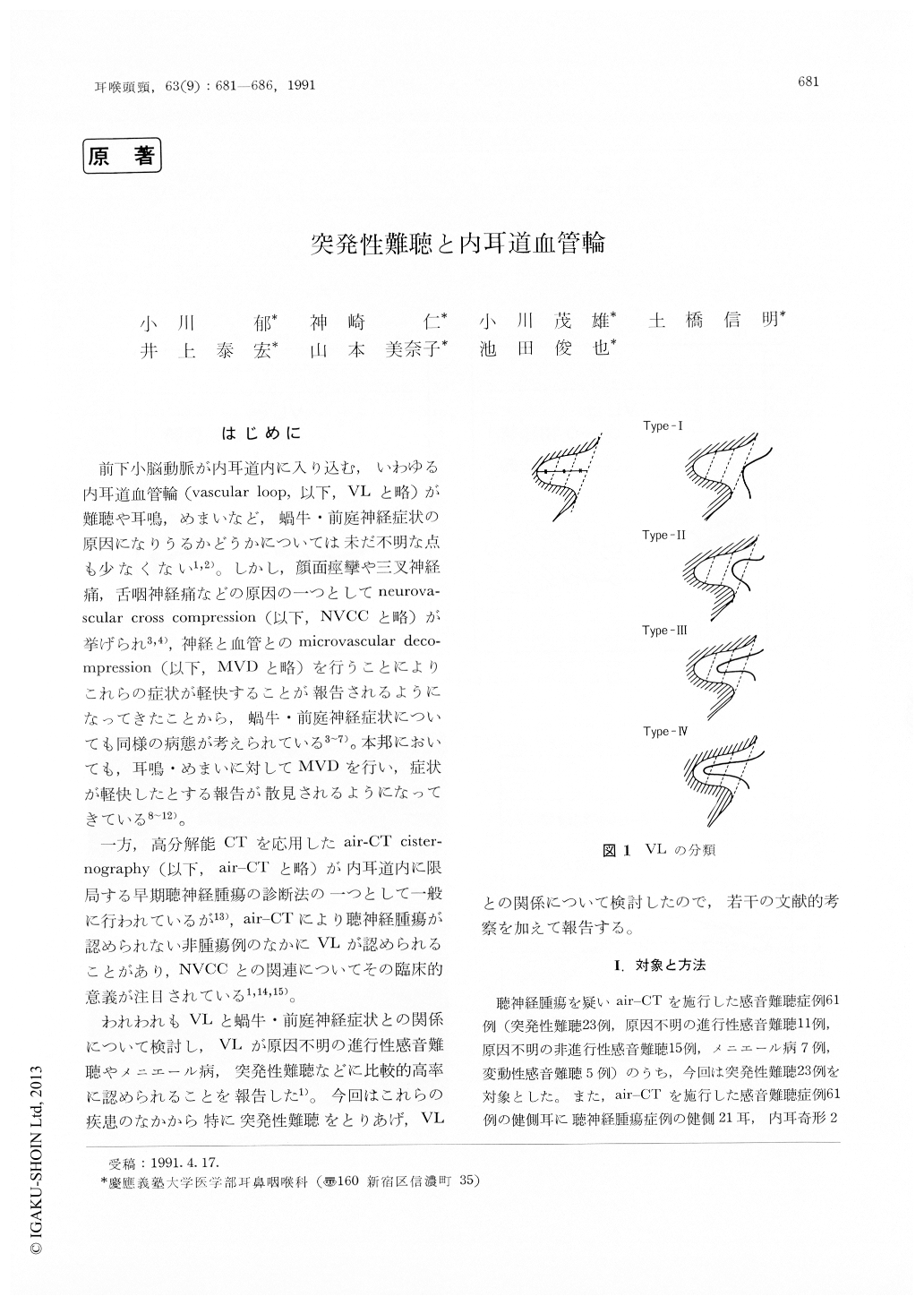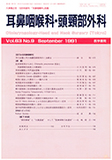Japanese
English
- 有料閲覧
- Abstract 文献概要
- 1ページ目 Look Inside
はじめに
前下小脳動脈が内耳道内に入り込む,いわゆる内耳道血管輪(vascular loop,以下,VLと略)が難聴や耳鳴,めまいなど,蝸牛・前庭神経症状の原因になりうるかどうかについては未だ不明な点も少なくない1,2)。しかし,顔面痙攣や三叉神経痛,舌咽神経痛などの原因の一つとしてncurova-scular cross compression (以下,NVCCと略)が挙げられ3,4),神経と血管とのmicrovascular deco-mpression (以下,MVDと略)を行うことによりこれらの症状が軽快することが報告されるようになってきたことから,蝸牛・前庭神経症状についても同様の病態が考えられている3〜7)。本邦においても,耳鳴・めまいに対してMVDを行い,症状が軽快したとする報告が散見されるようになってきている8〜12)。
一方,高分解能CTを応用したair-CT cister-nography(以下,air-CTと略)が内耳道内に限局する早期聴神経腫瘍の診断法の一つとして一般に行われているが13),air-CTにより聴神経腫瘍が認められない非腫瘍例のなかにVLが認められることがあり,NVCCとの関連についてその臨床的意義が注目されている1,14,15)。
For the purpose of clarifying the relationship between vascular loop (VL) in the internal audi-tory canal and sudden deafness, we investigated the clinical features and test results of 23 patients with sudden deafness who underwent air-CT cisternography. VL was observed in 7 patients (30.4%). Three was no remarkable difference in clinical features between the patients with VL and those without VL. Only one out of 7 patients with VL showed a retrocochlear hearing loss, and no patient showed canal paresis on caloric test. VL, was also identified in only 6 out of 88 control patients. (6.8%).
From these results, we concluded that VL might be one of the inducing factors of sudden deafness and an inner ear circulatory insufficiency caused by VL was considered as an etiology of sudden deafness.

Copyright © 1991, Igaku-Shoin Ltd. All rights reserved.


